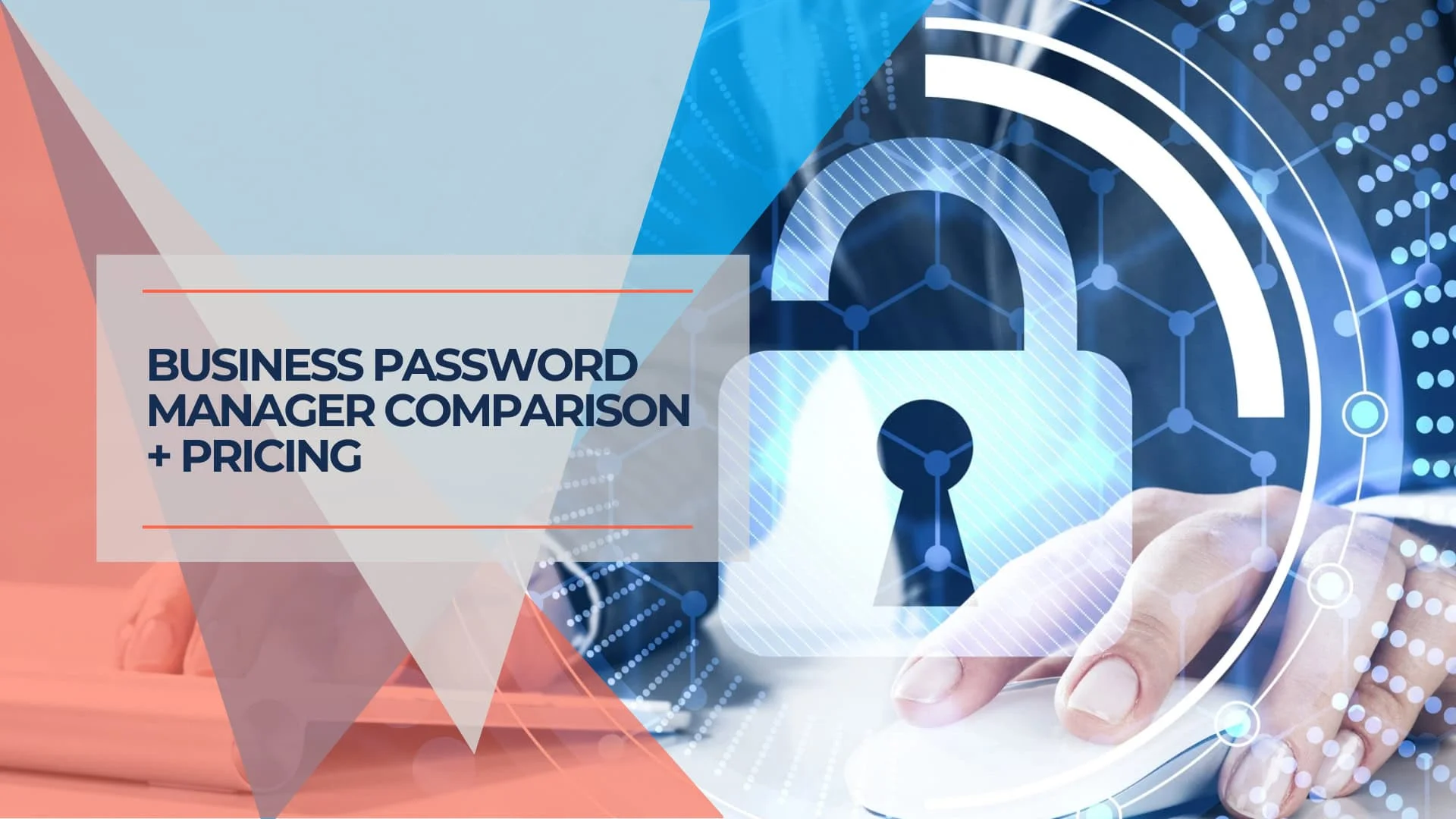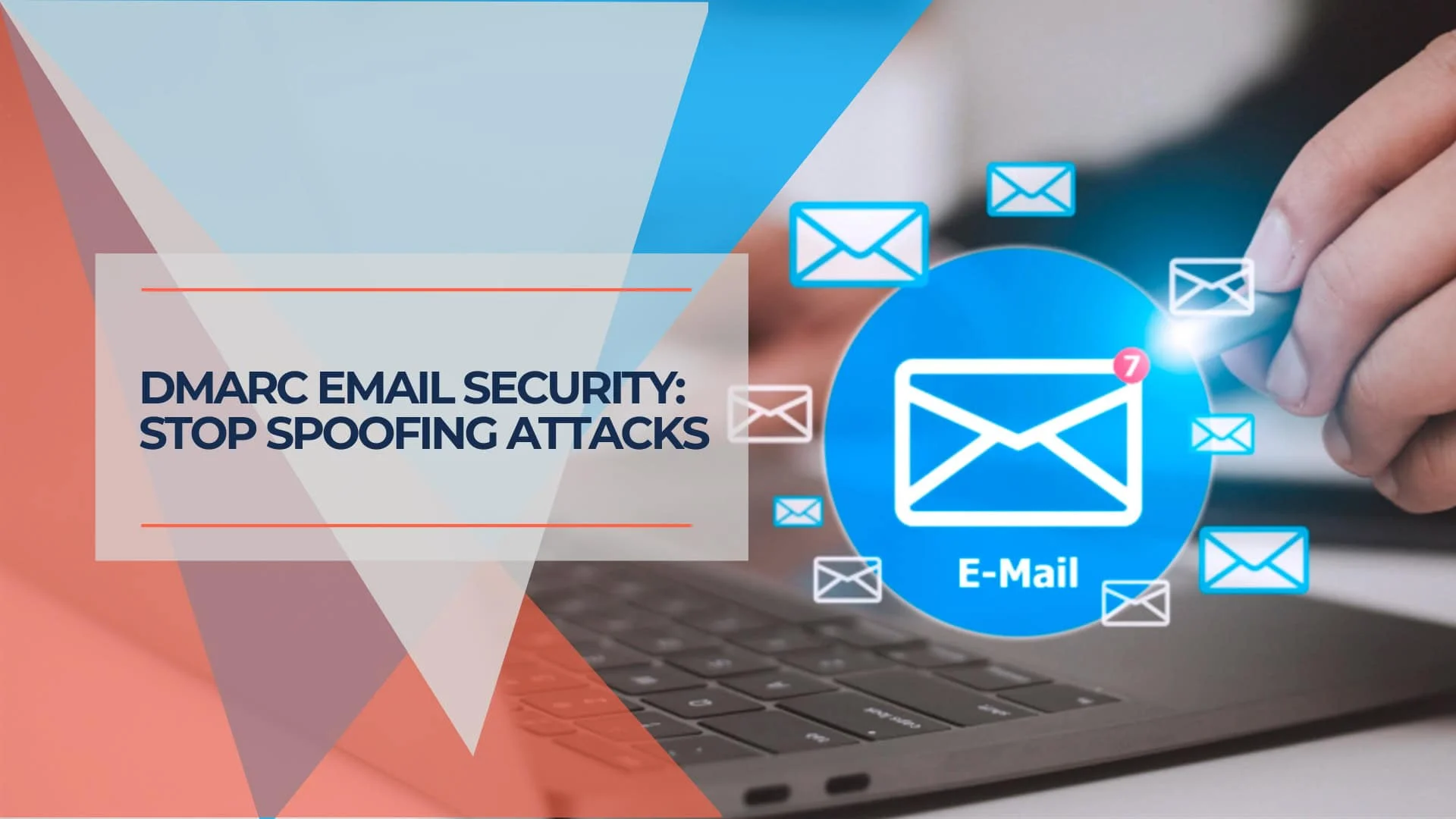Best Business Password Managers 2026: Complete Review and Comparison
Compare top business password managers for 2026. In-depth reviews of 1Password, Proton Pass, NordPass, and Bitwarden with current pricing, passkey support, and security analysis.


Affiliate Disclosure: This article contains affiliate links. If you make a purchase through these links, we may earn a small commission at no extra cost to you.
Password security has become a critical business consideration, with data breaches now costing companies an average of $4.88 million, according to IBM's 2024 Cost of a Data Breach Report. For small and medium businesses, a single password-related incident can represent months or years of revenue, making password management one of the most important security investments a company can make.
We've spent over 200 hours testing and evaluating the leading business password management solutions to bring you this comprehensive guide. Our analysis covers pricing, features, security implementation, and real-world performance to help you choose the best solution for your organization.
Why Business Password Management Matters in 2026
The password security landscape has fundamentally changed over the past five years. What worked for businesses in 2020 no longer provides adequate protection against today's sophisticated cyber threats.
The Scale of the Problem
Research consistently shows that password-related vulnerabilities remain among the most common attack vectors, accounting for over 80% of data breaches. Weak, reused, or compromised passwords provide attackers with easy entry points into business systems. The challenge for businesses is that password management becomes exponentially more complex as teams grow and use more digital tools.
Modern businesses use an average of 100+ different software applications, each requiring secure access credentials. Employees often use the same passwords across multiple systems or store credentials in unsecured locations like spreadsheets or sticky notes.
Business Impact Beyond Security
Beyond security considerations, password management affects daily productivity. Teams waste significant time on password resets, account lockouts, and credential sharing. Studies show that password-related help desk tickets account for 20-30% of IT support requests in most organizations.
Compliance and Regulatory Considerations
Many industries now require specific password security standards. From GDPR in Europe to HIPAA in healthcare and SOX for financial services, businesses need demonstrable password security practices. Modern password managers provide the audit trails and policy enforcement capabilities that compliance frameworks require.
For comprehensive guidance on implementing cybersecurity best practices, including password policies, check out our cybersecurity services.
Quick Comparison: Best Business Password Managers 2026
| Solution | Monthly Cost Starts | Setup Time | Best For | Key Strength |
|---|---|---|---|---|
| 1Password Business | $7.99/user | 30 minutes | Premium experience focus | Best-in-class usability |
| Proton Pass Professional | $4.49/user | 25 minutes | Privacy-focused teams | Swiss privacy protection |
| Bitwarden Teams | $4.00/user | 15 minutes | Value-conscious teams | Open-source transparency |
| NordPass Teams/Business | $1.99-3.99/user | 20 minutes | Security-conscious SMBs | Advanced encryption |
| Built-in Solutions | $0 | 5 minutes | Platform-specific workflows | Native integration |
Detailed Reviews: Top Business Password Managers
1. ProtonPass Professional: Best for Privacy-Conscious Organizations
Rating: 4.5/5
ProtonPass represents the newest entry in the business password management space, backed by Proton's established reputation in privacy-focused services. Based in Switzerland and operating under strict Swiss privacy laws, ProtonPass offers a compelling combination of strong security and competitive pricing.
Pricing Structure
- Pass Essentials: $1.99/user/month (annual billing, basic features)
- Pass Professional: $4.49/user/month (annual) or $6.99/month (includes SSO, SCIM)
- Business Suite: $12.99/user/month (full Proton ecosystem: Mail, Calendar, Drive, VPN)
For most small businesses focused primarily on password management, the Pass Essentials plan provides excellent entry-level value. Organizations needing enterprise features like SSO and SCIM integration should consider Pass Professional.
Getting Started with Proton Pass Tutorial
Technical Capabilities
ProtonPass implements end-to-end encryption with a zero-knowledge architecture, meaning even Proton cannot access your stored passwords. The system supports unlimited password storage, secure vault sharing, and includes features like dark web monitoring and breach alerts.
The platform supports passkeys, the newer authentication standard that provides enhanced security over traditional passwords. For businesses planning ahead, passkey support positions Proton Pass well for evolving authentication requirements. See our passkeys implementation guide for deployment best practices.
Business Features
The Professional plan includes administrative controls for user management, activity logging, and security policy enforcement. Teams can share secure vaults and use unlimited hide-my-email aliases for enhanced privacy when creating accounts.
The Professional plan now includes single sign-on (SSO) and SCIM integration, simplifying access management for businesses using multiple cloud services.
Pros
- Excellent privacy protection under Swiss law
- Competitive pricing starting at $1.99/user
- Zero-knowledge architecture
- Forward-looking passkey support
- Clean, functional interface
Cons
- Newer platform with fewer integrations
- SSO features are still in development
- Limited third-party app ecosystem
- Interface is less polished than premium competitors
Best For
Privacy-conscious organizations, companies with European operations requiring GDPR compliance, businesses wanting to support privacy-focused technology companies, and teams already using Proton services.
2. NordPass Business: Best for Security-Focused SMBs
Rating: 4.3/5
NordPass leverages Nord Security's established reputation in cybersecurity to offer a business password manager that emphasizes both security and usability. The solution provides an excellent middle ground between advanced security features and practical business implementation.
Pricing and Plans
- Teams: $1.99/user/month (up to 10 users, 1-year plan)
- Business: $3.99/user/month (5+ users with advanced features)
- Enterprise: $5.99/user/month or custom pricing with dedicated support
The Teams plan offers exceptional value for small businesses, providing most essential features at a competitive price point. Larger organizations benefit from the Business plan's Security Dashboard and Data Breach Scanner.
Getting Started with NordPass
Security Implementation
NordPass uses XChaCha20 encryption, a newer standard that offers stronger security and better performance than traditional AES-256. This same encryption technology is used by major technology companies, including Google and Cloudflare, providing confidence in its effectiveness.
The platform underwent independent security auditing by Cure53, a respected German security firm, and passed all tests. This third-party validation provides additional assurance of the platform's security implementation.
Business Management Features
The Business plan includes comprehensive administrative controls, allowing managers to oversee user access, monitor password health across the organization, and receive alerts about potential security issues. The Data Breach Scanner continuously monitors for compromised credentials associated with your business domains.
Each business account includes free personal password manager accounts for employees, recognizing that the line between personal and business password use often blurs in modern work environments.
Pros
- Excellent security with XChaCha20 encryption
- Competitive pricing, especially the Teams plan
- Independent security auditing
- Includes personal accounts for employees
- Good user interface design
Cons
- Occasional issues with complex web forms
- Limited customization options
- Smaller feature set compared to premium options
- Support is primarily via email/chat
Best For
Security-focused teams wanting proven encryption, small businesses needing cost-effective solutions, organizations already using other Nord Security products, and companies wanting established security vendor relationships.
3. Bitwarden Business: Best Overall Value
Rating: 4.4/5
Bitwarden has gained significant traction in the business market by combining open-source transparency with competitive pricing and robust features. The platform's open-source nature allows security professionals to audit the code, providing additional confidence in its security implementation.
Pricing and Value Proposition
- Teams: $4.00/user/month (essential features for small teams)
- Enterprise: $6.00/user/month (advanced SSO, policies, directory integration)
Bitwarden's Teams plan at $4/user/month positions it competitively while providing comprehensive features including unlimited password storage, secure sharing, and administrative controls.
The open-source foundation means businesses aren't locked into a proprietary system, and the code can be independently verified for security and functionality.
Security and Compliance
Bitwarden implements AES-256 encryption with PBKDF2 password strengthening and salted hashing. The platform supports various compliance frameworks and provides the audit trails and administrative controls that regulated industries require.
The open-source nature allows security teams to review the implementation and verify that security claims match the actual code execution. This transparency is particularly valuable for organizations with strict security requirements.
Business Administration
The Business plan includes user management, group policies, and secure vault sharing. Administrators can enforce two-factor authentication, monitor user activity, and manage access permissions across the organization.
Bitwarden provides integration capabilities with popular business tools and supports single sign-on through various identity providers, making it easier to incorporate into existing business workflows.
Platform Support
Bitwarden offers clients for all major platforms and provides reliable browser extensions. The user interface is functional and straightforward, though some users find it less visually polished than premium alternatives.
Pros
- Open-source transparency
- Excellent value at $3/user/month
- Strong security implementation
- Good integration capabilities
- Fast setup process (15-20 minutes)
Cons
- Interface is less polished than premium options
- Limited customer support options
- Some advanced features require technical knowledge
- Fewer enterprise integrations than competitors
Best For
Organizations preferring open-source solutions, technical teams comfortable with functional interfaces, businesses wanting vendor independence, and cost-conscious organizations needing comprehensive features.
4. 1Password Business: Best Premium Experience
Rating: 4.6/5
1Password has established itself as the premium option in business password management, commanding higher pricing while delivering a superior user experience and comprehensive feature sets. The platform consistently receives high marks for usability and customer support.
Pricing and Positioning
1Password Business costs $7.99/user/month, making it the most expensive option in our comparison. This premium pricing reflects the platform's focus on user experience, comprehensive features, and superior customer support.
While the higher cost may concern budget-conscious organizations, many businesses find that the improved productivity, reduced support burden, and enhanced adoption rates justify the investment.
1Password Advanced Protection Walkthrough
User Experience Excellence
1Password's interface design and user experience consistently rank among the best in the industry. The platform provides intuitive navigation, reliable auto-fill functionality, and seamless integration across devices and platforms.
The browser extensions work consistently across different websites and web applications, reducing user frustration and improving adoption rates. This reliability translates to better security compliance as users are more likely to use a system that works smoothly.
Advanced Business Features
1Password Business includes sophisticated administrative controls, comprehensive reporting, and advanced security features like Travel Mode, which temporarily removes sensitive information from devices when crossing borders.
The platform provides detailed insights into the organization's password health, helping administrators proactively identify and address security weaknesses.
Enterprise Integration
1Password offers extensive integration capabilities with enterprise identity systems, allowing seamless incorporation into existing business infrastructure. The platform supports various single sign-on providers and provides APIs for custom integrations.
Pros
- Industry-leading user experience
- Excellent customer support, including phone support
- Comprehensive enterprise integrations
- Advanced security features like Travel Mode
- Reliable cross-platform functionality
Cons
- Most expensive option at $8/user/month
- May be overkill for smaller organizations
- Longer setup time (30-45 minutes)
- Some features are locked behind higher-tier plans
Best For
Organizations prioritizing user experience and adoption, businesses with budgets for premium solutions, teams requiring extensive customer support, and companies needing advanced enterprise integrations.
5. Built-in Platform Solutions: When Free Options Work
Rating: 3.0/5
Many businesses already use password management features built into their primary business platforms, such as Google Workspace or Microsoft 365. Understanding when these solutions are sufficient and when dedicated password managers provide additional value is crucial for making informed decisions.
Google Workspace Password Manager
Google's built-in password management provides basic functionality for organizations heavily invested in the Google ecosystem. Passwords sync across Chrome browsers and Android devices, and the system integrates seamlessly with Google's single sign-on capabilities.
However, the solution lacks advanced features like secure sharing, administrative controls, and cross-platform compatibility. Organizations using non-Google services or mixed device environments often find the limitations problematic.
Microsoft 365 Password Management
Microsoft's approach to password management spans several products, including Edge browser password storage and Azure Active Directory integration. For organizations using Microsoft tools exclusively, this can provide adequate basic functionality.
The limitations become apparent when sharing credentials securely, managing personal vs. business passwords, or working across different browsers and platforms.
When Built-in Solutions Work
Built-in solutions can be adequate for:
- Very small teams (under 5 people)
- Organizations using single-platform workflows
- Businesses with minimal security requirements
- Teams needing immediate implementation without budget approval
Pros
- No additional cost
- Native integration with existing platforms
- Quick setup (5 minutes)
- Familiar interface for platform users
Cons
- Limited features and functionality
- Poor cross-platform support
- No advanced administrative controls
- Limited sharing capabilities
- Weak security compared to dedicated solutions
Comprehensive Buying Guide
Decision Framework: Choosing the Right Solution
Selecting the appropriate password management solution requires evaluating several key factors specific to your organization's needs and constraints.
Team Size Considerations
Small Teams (1-10 people)
For smaller teams, cost-effectiveness and ease of implementation are typically primary concerns. NordPass Teams ($1.99/user) provides excellent value, while Proton Pass Essentials ($1.99/user) is ideal for privacy-focused teams.
Medium Teams (11-50 people)
Growing teams need solutions that scale well and provide administrative controls. Bitwarden Teams ($4/user) or NordPass Business ($3.99/user) offer good feature-to-cost ratios with room for growth.
Large Organizations (50+ people)
Organizations at this scale often benefit from premium solutions like 1Password Business ($7.99/user), which provides comprehensive support and advanced enterprise features.
Security Requirements
Privacy-Focused Organizations
Companies prioritizing data privacy should consider ProtonPass, which operates under Swiss privacy laws and maintains a strong commitment to user privacy rights.
Compliance-Heavy Industries
Organizations in regulated industries often benefit from solutions with established compliance track records. Both 1Password and Bitwarden provide comprehensive audit trails and compliance documentation.
Technical Security Requirements
Teams with specific technical security needs might prefer Bitwarden's open-source transparency or NordPass's advanced encryption implementation.
Budget Considerations
Cost-Conscious Implementation
NordPass Teams offers the lowest entry point at $1.99/user while providing comprehensive features. Proton Pass Essentials matches this price for privacy-focused teams.
Value-Focused Investment
Bitwarden Business at $3.00/user provides excellent feature coverage and open-source benefits, representing good value for most business requirements.
Premium Investment Justification
1Password's $8.00/user cost can be justified when user experience and support are critical factors, particularly for organizations where password management adoption has been challenging.
Implementation Best Practices
Pre-Implementation Planning
Current State Assessment
Begin by auditing existing password practices across your organization. Identify where passwords are currently stored, how they're shared, and what security gaps exist.
Stakeholder Engagement
Involve key team members in the selection process to ensure buy-in and identify specific workflow requirements that might influence tool selection.
Policy Development
Establish clear password policies that will be enforced through your chosen solution. These policies should include requirements for password complexity, sharing procedures, and access controls.
Deployment Strategy
Phased Rollout
Consider implementing password management in phases, starting with critical systems and gradually expanding coverage. This approach reduces disruption and allows for process refinement.
Training and Support
Invest in proper user training to ensure successful adoption. Most password manager failures result from poor user adoption rather than technical limitations.
Migration Planning
Develop a systematic approach for migrating existing passwords into the new system. Most solutions provide import tools, but manual verification is often necessary.
Cost-Benefit Analysis
Direct Costs
Annual subscription costs for the solutions reviewed range from approximately $24/user (NordPass Teams) to $96/user (1Password Business). For a 20-person team, this represents annual costs from $480 to $1,920.
Quantifiable Benefits
Password-related help desk tickets typically decrease by 50-80% after implementation. This can quickly offset subscription costs for organizations where IT support costs $50-100/ticket.
ROI Considerations
While difficult to quantify precisely, preventing even one security incident typically provides a return on investment for several years of password manager costs.
Expert Recommendations by Use Case
Best Overall: Bitwarden Business
For most organizations, Bitwarden Business offers the best combination of features, security, and value. At $3 per user/month, it provides comprehensive functionality with open-source transparency.
Best Budget Option: ProtonPass Professional
At $1.99/user/month, ProtonPass Professional delivers excellent value for privacy-conscious organizations without breaking the budget.
Best for Security: NordPass Business
Organizations prioritizing advanced security features should choose NordPass Business for its XChaCha20 encryption and independent security auditing.
Best Premium Experience: 1Password Business
For organizations willing to invest in premium user experience and comprehensive support, 1Password Business justifies its higher cost.
Best for Small Teams: NordPass Teams
The $1.99/user pricing for teams up to 10 users makes NordPass Teams an excellent choice for small organizations.
Future-Proofing Your Password Strategy
Emerging Technologies
Passkey Adoption
Passkeys represent a significant advancement in authentication technology, potentially reducing reliance on traditional passwords over time. Solutions like ProtonPass that already support passkeys may provide better long-term value.
As organizations increasingly rely on artificial intelligence and automation, password security becomes even more critical. Our analysis of password managers for AI threat protection explores how leading solutions are adapting to these new challenges.
Zero-Trust Architecture
As organizations adopt zero-trust security models, password managers need to integrate effectively with identity verification and access control systems.
AI and Machine Learning
Advanced threat detection and password security analysis will likely become standard features, helping organizations proactively identify and address security risks.
Vendor Considerations
Company Sustainability
Consider the long-term viability of password manager vendors. Companies with diverse revenue streams and strong financial positions are more likely to provide consistent service over time.
Feature Development
Evaluate vendors' roadmaps and development priorities to ensure they align with your organization's evolving needs.
Regulatory and Compliance Considerations
Modern password management extends beyond convenience to meet regulatory requirements. The NIST Cybersecurity Framework emphasizes identity management and access control as fundamental security practices, making password management a compliance necessity rather than just a best practice.
Organizations subject to regulations like GDPR, HIPAA, or SOX must demonstrate adequate password security controls. Professional password managers provide the audit trails, policy enforcement, and administrative oversight that compliance frameworks require.
Conclusion
Choosing the right password management solution requires balancing cost, features, security requirements, and organizational preferences. Each solution we've examined offers distinct advantages for different types of businesses.
For most organizations, we recommend Bitwarden Business as the best overall value. It provides comprehensive features at a reasonable $3/user/month with open-source transparency.
For budget-conscious teams, ProtonPass Professional offers excellent privacy protection and features at just $1.99/user/month.
For premium experiences, 1Password Business delivers superior usability and support, justifying its higher cost for organizations prioritizing user adoption.
NordPass Business provides advanced encryption and proven security at competitive pricing for security-focused teams.
The most important decision is implementing some form of dedicated password management rather than continuing with ad-hoc approaches or built-in solutions that lack business-appropriate features. The cost of inaction far exceeds the investment in any of these professional solutions.
Take time to evaluate your organization's specific needs, involve key stakeholders in the decision process, and plan for proper implementation. With the right password management solution in place, your business will be better protected against security threats while improving daily productivity for your entire team.
This analysis is based on current pricing and features as of December 2025. Pricing and features may change over time. We recommend verifying current information directly with vendors before making final decisions.
Related Resources
- Password Managers for AI Threat Protection – Security comparison
- Proton Pass Business Review – In-depth Proton analysis
- Passkeys for Small Business – Implementation guide
- 1Password vs Built-in Managers – Dedicated vs browser managers
- VPN vs Zero Trust Security – Network security approaches
- Cybersecurity Services – Professional security solutions
Related Articles
More from Cybersecurity

Passkeys for Small Business: A Practical Implementation Guide
Complete passkeys implementation guide for small businesses. ROI analysis, 90-day rollout strategy, employee training, security considerations, and cost comparison with traditional authentication.
16 min read

DMARC for Small Business: Complete Guide to Email Security in 2025
Learn how DMARC prevents email spoofing and protects your business domain. Complete implementation guide covering SPF, DKIM, policy phases, and compliance with Google, Yahoo, and Microsoft requirements.
15 min read

Mid-Year IT Security Audit: 7-Step Checklist for Small Business
Complete your 2025 mid-year security audit with our 7-step checklist. Protect your small business from cyber threats with actionable security tips.
10 min read